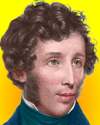
On 31 Jul 1800, Friedrich Wöhler was born, the German chemist who co-discovered an element, but is best known for his landmark accomplishment as the first chemist to create an organic compound from purely inorganic substances. Thus he united two disciplines formerly regarded as totally independent. This “Biographical Sketch of Frederick Wöhler” from The Popular Science Monthly (1880) will not only give you a comprehensive insight into his life and career, but should also impress you with the appetite of nineteenth century popular magazine readers for substantial science content.

He was born on 31 Jul 1919, and is remembered as an Italian novelist, short-story writer and poet. but Primo Levi was also a chemist most of his professional life. As a memoirist, he is noted for his restrained and moving autobiographical account of and reflections on survival in the Nazi concentration camps. Today's book pick is: The Periodic Table (Everyman's Library Contemporary Classics Series), by Primo Levi, his most famous book. In it, Primo Levi uses the elements as metaphors to create a cycle of linked, somewhat autobiographical tales, including stories of the Piedmontese Jewish community he came from, and of his response to the Holocaust.
With 4.5 out of 5 stars from approaching 100 reviewers, if you do nothing more than read their comments on the Amazon site, this book is well worthy of your attention. Your Webmaster has read and recommends it as an exquisite diversion from chemistry into profound stories from an all-too-real life. It is the kind of book your bookshelf has been waiting for! Here is one of the reviews, which tells you why I think it is charming to read, just for its own value as a reviewer’s personal anecdote:
I'd give it 6 stars if I could. By Jae Brodsky. When I was 14, my high school chemistry teacher gave my class a writing assignment, which really pissed us off. We were in a chemistry class, why did Mr. Ellison expect us to write a short story? It wasn't actually an entire story: the first half was already written for us. It was about the ‘adventures’ of one atom of carbon. I felt like I was reading a book for small children on molecular chemistry because the writing style was simple, with no extra flourishes and long, scientific phrases. How demeaning to 14 year old me! In any case, I went home and wrote a completely uninspired ending to the carbon-atom fairy tale. If I remember correctly, the rest of the class did the same thing. Some were better than others, but none of them even began to come close to the original ending.
Mr. Ellison took our mediocre stories and, in a bargain where we definitely got the better deal, gave us the end of Primo Levi's Carbon, the last chapter of The Periodic Table. Nothing had prepared me for it. That simple style that I had so despised the night before was in fact the work of a writer who had stripped off all of those unnecessary phrases that I had been looking for, who had left nothing but the unadorned truth. Struck by this, I went out and bought the book.
It consists of 21 chapters, each of which have an element of the periodic table as their themes. But in truth each chapter/story is based on one idea which is explored. Some stories are pure fiction, some are remembrances, and some are meditations. They range from family gatherings to amusing teenage chemistry mistakes to the threads that bind us all together. Levi was not only a gifted chemist and a gifted writer, but someone who had that rare talent of opening his personal philosophies to the reader, and you can't help but feel that you’ve gotten to know him by the end of the book, which certainly makes the read worth it.
It is available from Amazon, typically about New from $7.88. Used from $2.05. (As of earlier time of writing - subject to change.)
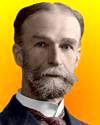 | No research will answer all queries that the future may raise. It is wiser to praise the work for what it has accomplished and then to formulate the problems still to be solved. |
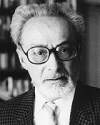 | Our atom of carbon enters the leaf, colliding with other innumerable (but here useless) molecules of nitrogen and oxygen. It adheres to a large and complicated molecule that activates it, and simultaneously receives the decisive message from the sky, in the flashing form of a packet of solar light; in an instant, like an insect caught by a spider, it is separated from its oxygen, combined with hydrogen and (one thinks) phosphorus, and finally inserted in a chain, whether long or short does not matter, but it is the chain of life. All this happens swiftly, in silence, at the temperature and pressure of the atmosphere, and gratis: dear colleagues, when we learn to do likewise we will be sicut Deus [like God], and we will have also solved the problem of hunger in the world. |
 | I tell young people to reach for the stars. And I can't think of a greater high than you could possibly get than by inventing something. |
| Before you look at today's web page, see if you can answer some of these questions about the events that happened on this day. Some of the names are very familiar. Others will likely stump you. Tickle your curiosity with these questions, then check your answers on today's web page. | |
| Births | |
 | Theobald Smith, born 31 Jul 1859, was an American microbiologist and pathologist who discovered the causes of several infectious and parasitic diseases. He is often considered the greatest American bacteriologist. In 1892 he linked Texas cattle fever with a protozoan parasite spread by blood-sucking arthropods. At the time, many scientists were skeptical that disease would be spread by bloodsucking insects. However, the precedent was established for other scientists to make links in cases of other diseases spread by insects. Which insect did Smith identify in the spread of Texas Cattle Fever? |
 | Friedrich Wöhler, born 31 Jul 1800, was a German chemist who co-discovered a new element. Having studied first medicine, then mineralogy, it was chemistry that became his primary interest. He found a method in 1827 for the production of metallic aluminum in the form of a grey powder by heating aluminum chloride with potassium. In 1828, he succeeded in the isolation of beryllium as a black-grey powder as well as of yttrium and (1856) crystalline silicon. His is most well-known for the synthesis of urea from ammonium cyanate (1828), which created an organic compound from an inorganic one, showing there was no absolute distinction between the two areas of chemical study. In 1862, he produced acetylene from calcium carbide. Not named above, can you identify another new element he co-discovered? |
 | On 31 Jul 1923, Stephanie Kwolek was born, an American chemist who worked in DuPont’s textile fibers department. She invented a new high-performance fiber that would be acid- and base-resistant and stable at high temperatures, suitable to replace steel in radial tyres. In fact, the fibre she developed was five times stronger than steel and had half the density of fiberglass. It is used to make bullet-proof jackets, military helmets, aircraft parts, inflatable boats, gloves, rope, and building materials. What is the name of the fiber that Kwolek invented? |
| Deaths | |
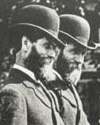 | Francis Edgar Stanley (1849-1918) was an American inventor, who with his twin brother Freeman, were famous manufacturers of automobiles. Francis previously had invented a photographic dry-plate process (1883), and as the Stanley Dry Plate Company the brothers had engaged in the manufacturing of the plates. They sold the company to Eastman Kodak in 1905, as their interest had turned to automobiles. At racing events, they often competed successfully against gasoline powered cars. What powered the engines of Stanley cars? |
| Events | |
 | On 31 July 1790, the first U.S. patent was granted to Samuel Hopkins of Vermont for a process for making potash and pearl ashes. Potash was used as an ingredient in soap and fertilizer. The patent was granted for a term of 14 years and signed by George Washington. When this patent was issued, what number was printed upon it? |
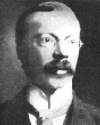 | On 31 Jul 1910, a murderer and his mistress were arrested after the first use of Marconi radio telegraph signals in a murder case. The man was fleeing after murdering his wife in England. They were spotted on board a ship making a transatlantic voyage. It was the first ship to be fitted with radio-telegraph, and the Captain first used it on 22 Jul 1910 to notify London Police of his “strong suspicions.” The suspects were apprehended when the ship docked in Canada. What was the name of this infamous murderer? |
Fast answers for the previous newsletter for July 30: electron microscope • Henry Ford • seismograph • William and John Kellogg • Winton Motor Car Company.
 If you enjoy this newsletter, the website, or wish to offer encouragement or ideas, please send feedback by using your mail reader Reply button.
If you enjoy this newsletter, the website, or wish to offer encouragement or ideas, please send feedback by using your mail reader Reply button. Your click on a Facebook, StumbleUpon, or other social button on the site webpages is also a welcome sign of appreciation. Thank you for using them.
© This newsletter is copyright 2020 by todayinsci.com. Please respect the Webmaster's wishes and do not put copies online of the Newsletter — or any Today in Science History webpage. (If you already have done so, please remove them. Thank you.) Offline use in education is encouraged such as a printout on a bulletin board, or projected for classroom viewing. Online, descriptive links to our pages are welcomed, as these will provide a reader with the most recent revisions, additions and/or corrections of a webpage. For any other copyright questions, please contact the Webmaster by using your mail reader Reply button.
--
If you do not want to receive any more newsletters, Unsubscribe
To update your preferences and to unsubscribe visit this link
Executive Real Estate Business Class
-
"It was like a man with wings. It wasn't like anything you'd see on TV or in a monster movie." ...
About the publisher
Search This Blog
Blog Archive
-
▼
2020
(1542)
-
▼
July
(200)
- PHOTOGRAPHY: The danger of documenting sharks
- Meet The Serial Killer Who Ate His Victims Because...
- The Roundup Top Ten from History News Network
- On This Day for July 31 - Lunar Roving Vehicle fir...
- Newsletter for Friday 31 July.
- Lockdowns killing more children than COVID + Docto...
- YOUR WEEKLY ESCAPE: Revisiting an iconic Nat Geo c...
- July 31: The Pilgrim Fathers Depart and the Battle...
- ANIMALS: The dog that got COVID-19
- On This Day for July 30 - Death of Otto von Bismar...
- Newsletter for Thursday 30 July.
- Frontline Docs 2nd Video Press Conf at SCOTUS We h...
- BREAKING NEWS: First U.S. dog to test positive for...
- July 30: First Defenestration of Prague, the 1st O...
- Demystified: Why Do Wolves Howl?
- The Champs Are Back on Forged in Fire Tonight
- SCIENCE: A rush to Mars during a rough patch at home
- Breaking News from History News Network
- On This Day for July 29 - National Aeronautics and...
- Newsletter for Wednesday 29 July.
- All Social Media Censor Frontline Docs COVID Video...
- July 29: Spanish Armada Scattered and Taft's Secre...
- TRAVEL: How to stay safe if you need to travel
- On This Day for July 28 - Beginning of World War I...
- Newsletter for Tuesday 28 July.
- Video Presentation from Washington Summit: America...
- July 28: Robespierre Guillotined, Austria-Hungary ...
- HISTORY: How the vice presidency became critical
- Enjoy Summer with Nat Geo Kids Magazine
- New This Week on History News Network
- On This Day for July 27 - Terrorist attack at Atla...
- Newsletter for Monday 27 July.
- COVID Propaganda & Tyrannical Edicts Affecting Men...
- July 27: Walter Raleigh Brings Tobacco, the Atlant...
- FAMILY: Can you transfer your ‘retro fun’ to your...
- The 10 greatest discoveries made by the British pu...
- On This Day for July 26 - Suez Canal seized, John ...
- Newsletter for Sunday 26 July.
- CDC says actual # of cases is up to 13X higher tha...
- July 26: 1st Muslim Civil War, Pizarro's Royal Cha...
- The Compass: Greece
- On This Day for July 25 - American advance into Ca...
- Newsletter for Saturday 25 July.
- VIRUS UPDATE: What does COVID-19 do to a child's b...
- July 25: The 1st Steam Locomotive, Mussolini Dismi...
- PHOTOGRAPHY: The photo that shocked a nation
- This Hardened Blob Of Nuclear Waste Could Kill You...
- On This Day for July 24 - Beginning of Mata Hari's...
- The Roundup Top Ten From History News Network
- Newsletter for Friday 24 July.
- Medical Journal: make the vaccine Mandatory! + Fre...
- YOUR WEEKLY ESCAPE: The man who claims to be Jesus...
- July 24: Cartier Lands in Canada, Mary Queen of Sc...
- ANIMALS: Let’s not forget this other catastrophe
- Demystified: Are Dogs Really Color-Blind?
- On This Day for July 23 - Egyptian monarchy topple...
- Newsletter for Thursday 23 July.
- listen to Dixie Brogdon Hopson tells how the hospi...
- July 23: Upper and Lower Canada United and the Bre...
- SCIENCE: The joy of vintage comforts
- A Puzzling Challenge on Forged in Fire Tonight
- Explore King Tut's tomb with National Geographic H...
- Breaking News from History News Network
- On This Day for July 22 - Deng Xiaoping reinstated...
- CDC Knows Masks and other methods don't work to st...
- Newsletter for Wednesday 22 July.
- July 22: First Congress of Vienna and Spoonerism
- TRAVEL: When tourism returns will it be better?
- Enjoy Summer with Nat Geo Kids Magazine
- On This Day for July 21 - Egyptians defeated in th...
- Newsletter for Tuesday 21 July.
- July 21: 1st Battle of Bull Run, the Trans-Siberia...
- HISTORY: John Lewis always stood for the same thing
- New This Week on History News Network
- On This Day for July 20 - First Moon landing, Sir ...
- Newsletter for Monday 20 July.
- What Scientific Study Shows 6 feet distance or "ma...
- July 20: On This Day in History
- FAMILY: Searching for patience
- Anne of Cleves: Henry VIII's most successful queen?
- On This Day for July 19 - U.S. women's suffrage mo...
- Newsletter for Sunday 19 July.
- Mask Truth Part 2, Data by Nations shows Hydroxych...
- July 19: 1st US Women's Rights Convention and V fo...
- The Compass: Colombia
- On This Day for July 18 - Publication of Mein Kamp...
- Newsletter for Saturday 18 July.
- Enough! Mask Truth, re-Creating you! the intended...
- CORONAVIRUS SPECIAL EDITION: What type of person d...
- July 18: Spanish Civil War Begins and 7 Years of K...
- PHOTOGRAPHY: Showing a nation losing its drinking ...
- How Julia Child Went From World War 2 Spy To Belov...
- Introducing Expedition: Learn! A New Way to Help K...
- The Roundup Top Ten for July 17, 2020
- On This Day for July 17 - Beginning of the Spanish...
- Newsletter for Friday 17 July.
- July 17: Execution of the Romanovs and a Stormy Bi...
- YOUR WEEKLY ESCAPE: An intimate look inside a mode...
- ANIMALS: The trouble with 'retired' chimps
- Man vs. 800-Pound Beast! Watch New Episode of Alon...
-
▼
July
(200)
-
Blogroll
-
About
HistoryFact










0 comments:
Post a Comment